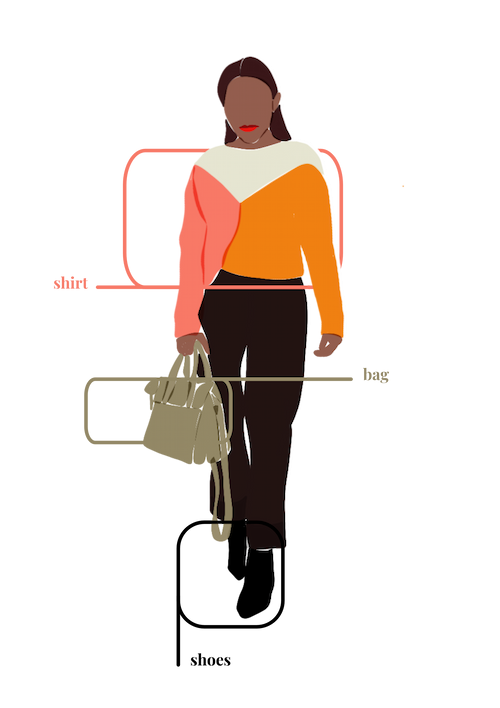- Clothes
- Bags
- Accessories
-
Inspiration
- Shoes
The Problem with Microplastics & How You Can Help the Ocean
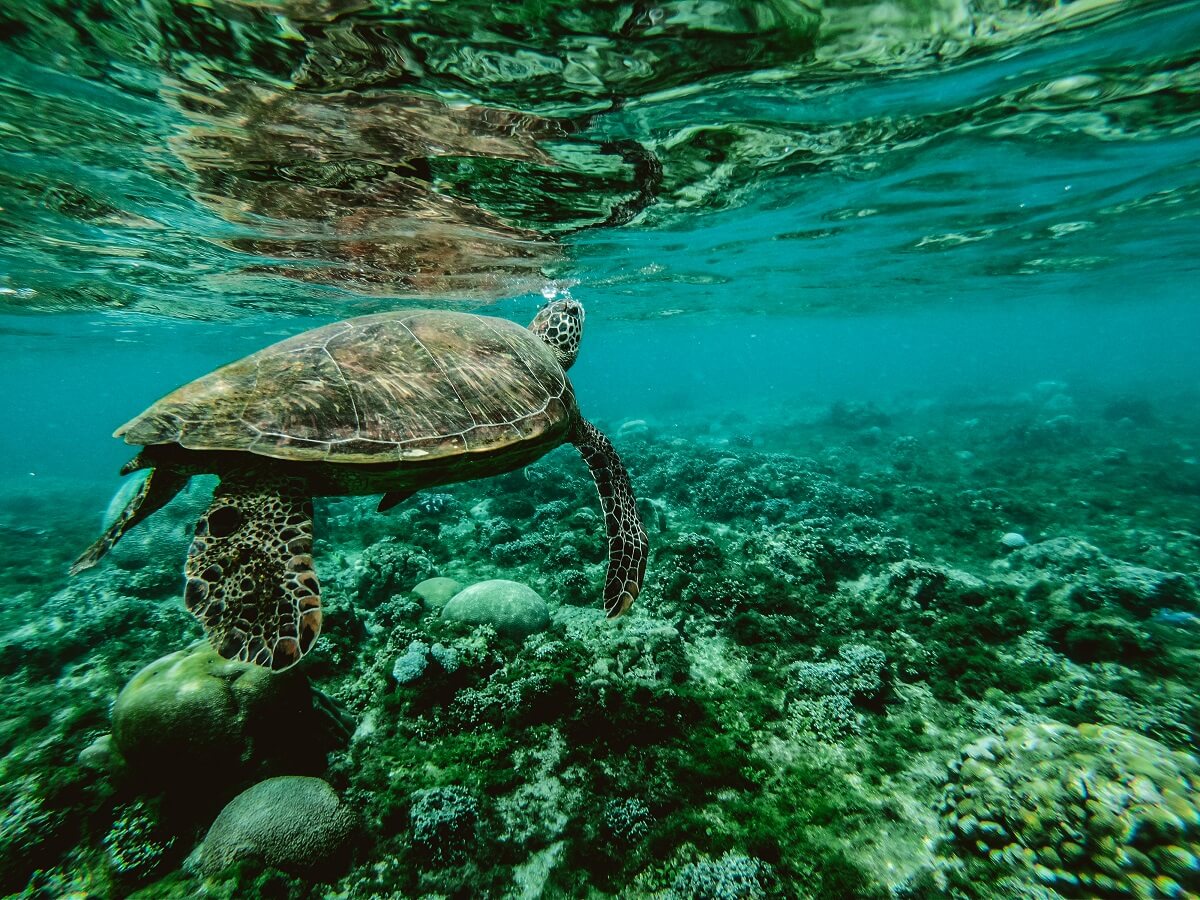
Sometimes, the biggest threats are tiny in size, and tasks as trivial as doing the laundry can have terrible consequences miles away from us.
Scary, we know!
But, once you discover what microplastics are and why they’re dangerous, there’s actually a lot that you can do to help the ocean.
What are microplastics and why are they a problem?
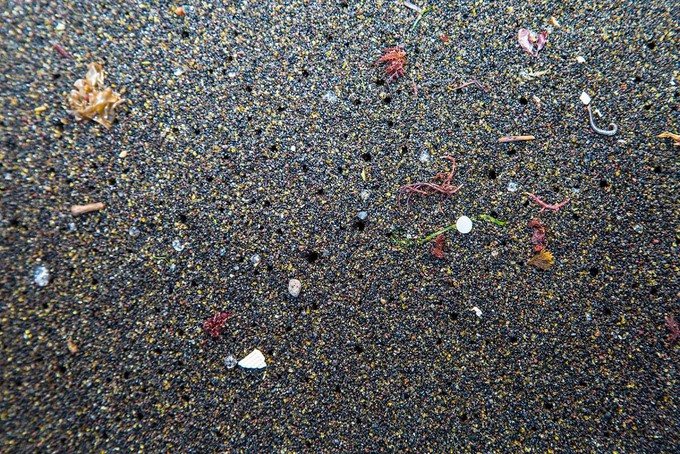 Microplastics are simply pieces of plastic smaller than 5 mm.
Microplastics are simply pieces of plastic smaller than 5 mm.
When they hang around on makeup, they also go by the name of microbeads or are camouflaged as polyethylene, polypropylene or polymethyl methacrylate on ingredient lists.
How do microplastics get into the ocean?
Sadly, it’s estimated that there are 1.4 million trillion plastic fibres in the ocean. They either get there as:
- Secondary microplastics: when larger plastic items break down into tiny non-biodegradable pieces;
- Primary microplastics: especially makeup beads and the microfibres that detach themselves from synthetic materials like polyester when you wash your clothes
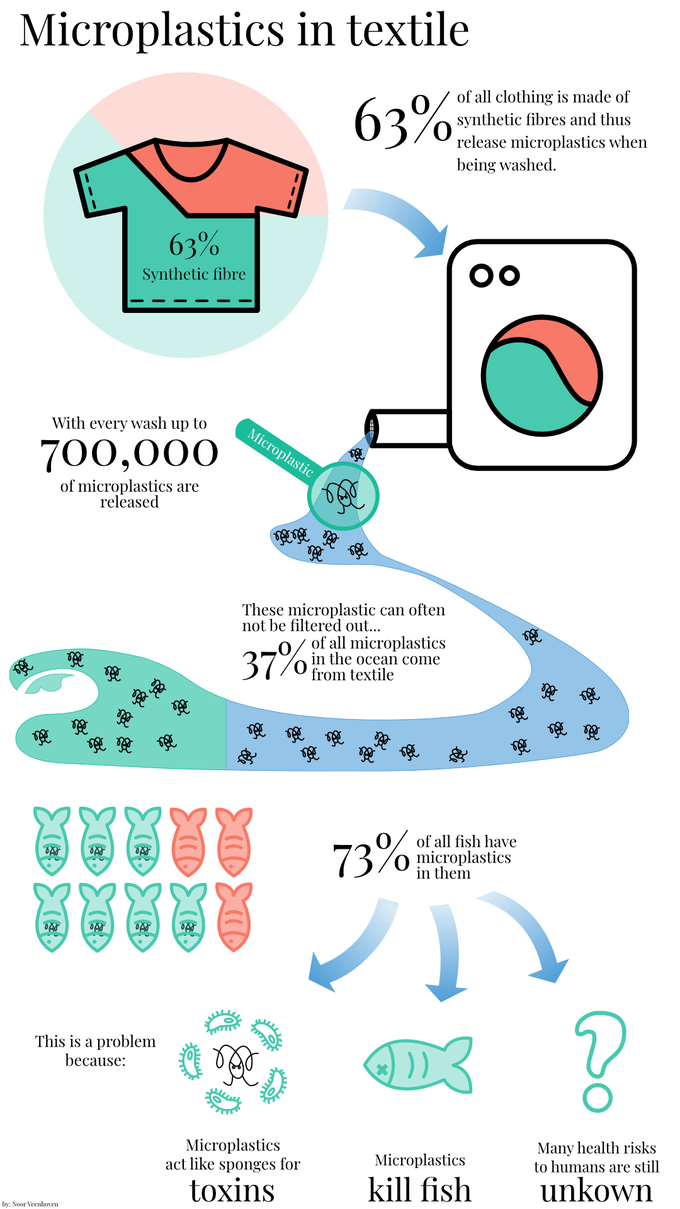
Here's a little overview:
Why are microplastics in the ocean a problem?
Once microplastics reach the ocean, they can be ingested by… well, anything that swims in it!
From the smallest zooplankton to bigger fish, mammals, turtles and seabirds, they infiltrate the entire ocean food chain. Some of the problems caused by microplastics in the ocean are starvation and endocrine disruption, as well as affecting reproduction and growth.
On top of ingesting microplastics directly, these animals are highly likely to eat some that already have.
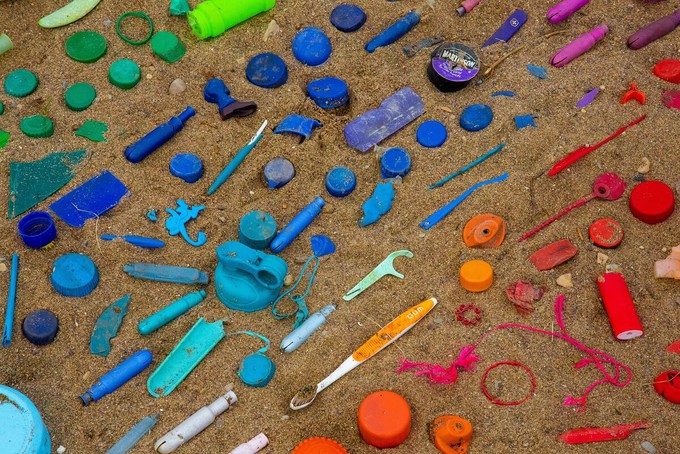
By now you’ve probably figured it out: if a fish eats microplastics and you eat it, you’re going to ingest them, too.
Actually, an average European seafood consumer ingests around 11,000 plastic particles EVERY YEAR. Yuck!
What can we do to reduce microplastics
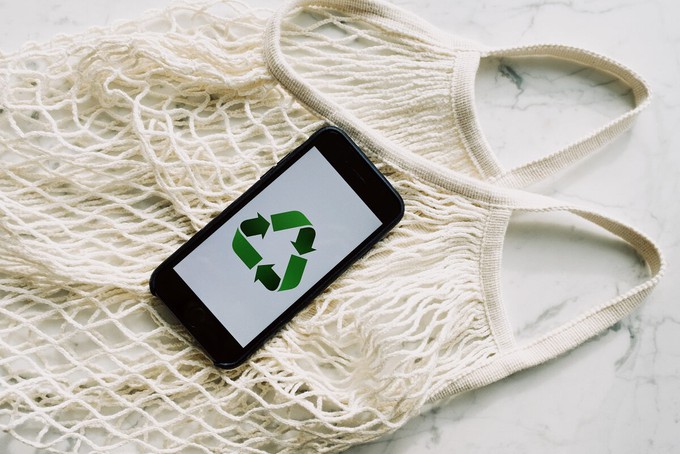
We definitely need a big change across several industries, but, in the meantime, here are a few tips to help the ocean by reducing your microplastic footprint.
Switch to plastic-free makeup
Don’t worry: to avoid makeup with microbeads, you don’t have to spend hours researching brands or deciphering every single label.
Beat the Microbead has a handy list of sustainable plastic-free alternatives.
Reduce your plastic footprint
Unfortunately, recycling doesn’t work miracles, and that’s exactly why it’s at the very end of the ‘Reduce, reuse, recycle’ mantra.
When only 32% of plastic is recycled in the UK, it’s much better to focus on the first two parts.
Wash your clothes less often
Because microplastics are mainly shed when washing synthetic garments, doing your laundry less often can help you reduce them... and it will also make your clothes last longer!
Here are some tricks to keep your clothes fresh and clean.
Capture them after each wash
Innovative products like the Cora Ball or Guppyfriend collect most of these fibres, stopping them from heading straight to the ocean.
A handy solution while we help the industry change!
Choose sustainable clothes
Instead of relying on cheap synthetic garments that are designed to fall apart after a few wearings and are bound to shed lots of microplastics, switch to ethical and eco-friendly clothes.
It can be tricky, since even natural fabrics like cotton can cause other problems, but here’s an article to help you understand what the most sustainable fabrics are.
On Project Cece, you can find ethical clothes from over 200 brands, and you can use our filters to scout for the right ones for you.
Spread the word
Not everyone knows about the dangers or even the existence of microplastics. Why not share this article to encourage your friends and family to implement these simple tips?
Related articles:
- Should We Stop Washing Our Clothing Completely?
- How to Take Care of Your Clothes to Make Them Last Longer
Project Cece is a platform that collects ethical clothing from different webshops on one website. Take a look in our shopping section and find the clothing that fits your style, budget and values!
Share our story
Project Cece is a platform that collects ethical fashion from vetted brands and shops in one place. Browse ethical fashion for women and men and find items that fit your style, budget and values!
